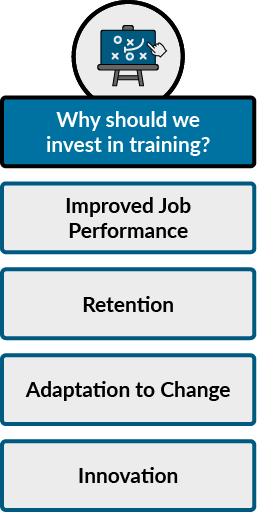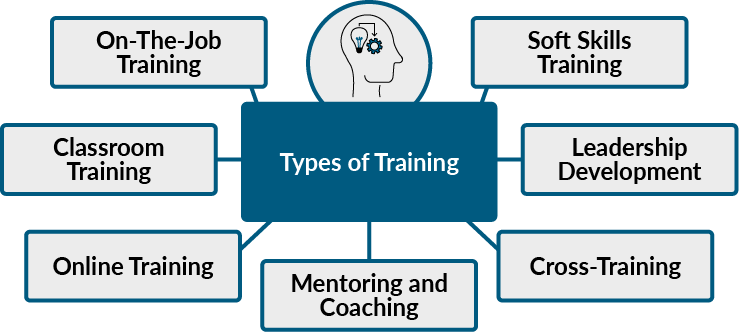Training
While onboarding and training are related, they are two distinct processes. Onboarding focuses on introducing new hires to the company culture, values, policies, and specific job responsibilities. The goal of onboarding is to help the new employee feel welcome, comfortable, and engaged in their new role. Conversely, training provides employees with the skills and knowledge needed to perform their duties effectively. This may include technical, product, sales, customer service, or any other training relevant to the employee’s role.
Companies should invest in employee training for several reasons:

- Improved job performance: Training helps employees acquire new skills and knowledge, which can improve their job performance and productivity. This can lead to better customer satisfaction, increased sales, and higher profits for the company.
- Retention: Providing employees with training and development opportunities shows that the company values them and is invested in their career growth. This can increase employee engagement and job satisfaction, which can help reduce turnover.
- Adaptation to change: To remain competitive, companies must stay current with the latest industry trends and technologies. Training can help employees stay current with these changes, allowing the company to adapt and evolve.
- Innovation: Training can also help employees develop new ideas and approaches to their work, leading to organizational innovation and creativity.
When deciding on training and development for an employee, it is best to conduct a needs assessment. A needs assessment identifies and analyzes the gap between an employee’s performance and the expected performance standards. It helps companies determine what training or development programs their employees need to bridge the gap and enhance performance. A needs assessment can be conducted through various methods, such as surveys, focus groups, and one-on-one interviews with employees and managers.
Insert Video 6 Here
Overall, investing in employee training is a wise business decision that can positively impact the company’s bottom line and overall success.
Types of Training
A company could offer employees various training and development programs; examples include:

- On-the-job training: This type of training is focused on providing hands-on experience to the employees to help them learn how to perform their job tasks effectively.
- Classroom training: This training involves lectures, workshops, and seminars to teach employees new skills and knowledge.
- Online training: This type of training uses e-learning tools such as videos, webinars, and interactive courses to train employees on specific topics.
- Mentoring and coaching: This type of training involves pairing employees with a more experienced colleague who can guide them and provide them with advice and support.
- Cross-training: This type of training involves training employees to perform tasks outside their typical job responsibilities to enhance their skills and provide more flexibility in the workplace.
- Leadership development programs: These programs focus on developing leadership skills in employees who show potential for growth and advancement within the company.
- Soft skills training: This training focuses on developing interpersonal skills such as communication, teamwork, and problem-solving, which are crucial for success in any workplace.
Research suggests that companies with effective training and development programs tend to have higher employee retention rates. According to a study by the Association for Talent Development, companies that invest in employee training and development have a 34% higher retention rate than companies that don’t. Employees feel more engaged, motivated, and satisfied with their jobs when they receive training and development opportunities.
Insert Video 7 Here
In summary, onboarding is more about introducing employees to the company culture and their job responsibilities. While training is focused on developing specific skills and knowledge needed to perform the job effectively. Having effective and thorough onboarding and training opportunities will lead to better employee satisfaction and, thus, retention.